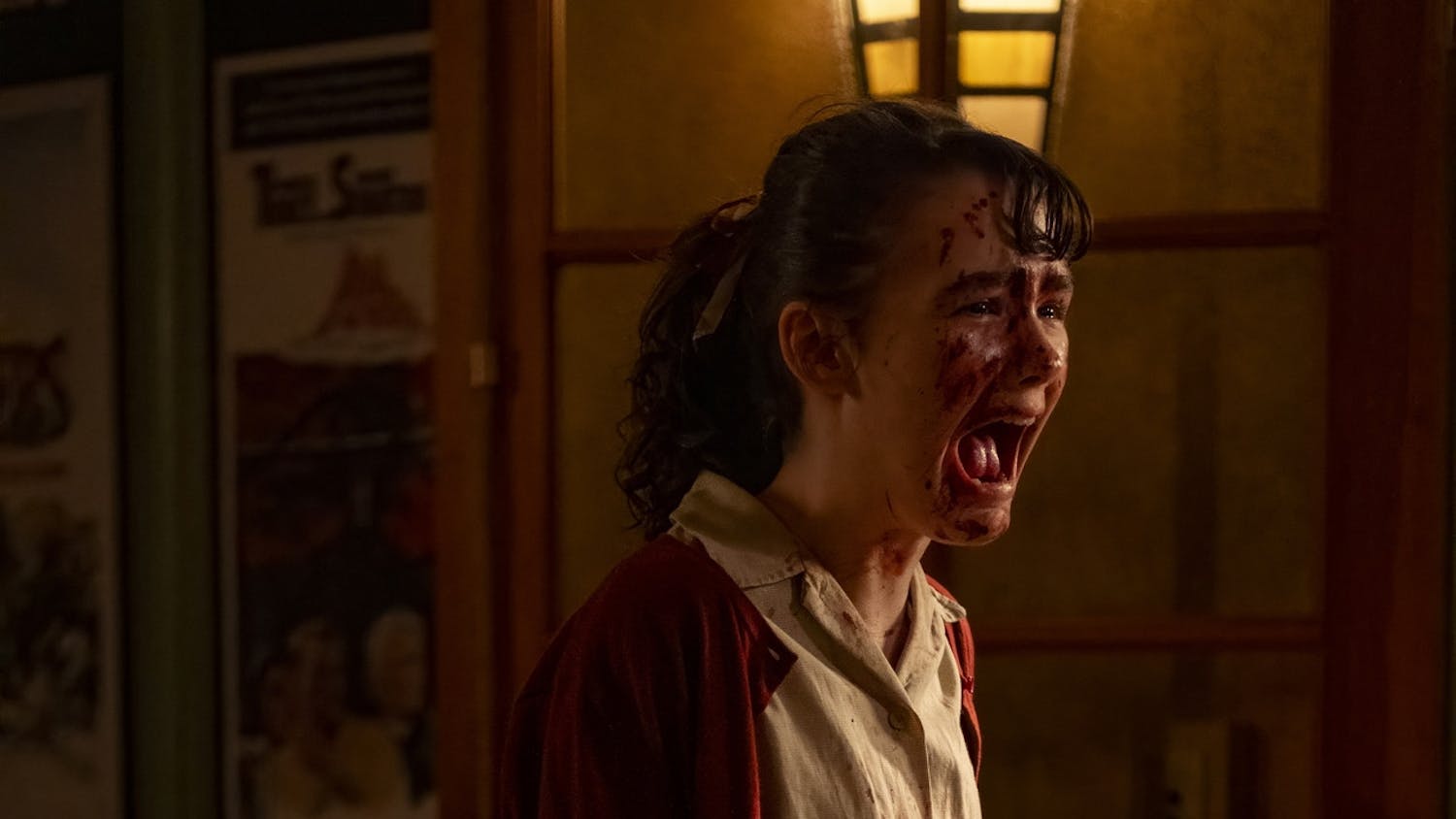Warning: Spoilers ahead
1970s music is playing in the background. A “Happy New Year 1980” banner flashes before us. We hear people yelling the New Year countdown before we are flashed with three images.
On a brick wall, a crow is staring at the audience, and the image of a woman with short black hair, an ominous smile and pitch-black eyes.
As those images pass, we hear the croak of the crow. Then, all of a sudden, almost abruptly, we are put in front of stained glass windows in a church.
We are introduced to the characters Tamerlane Usher, Frederick Usher and Victorine LaFourcade at their funeral. The camera pans to their father, the main character and narrator of the show, Roderick Usher, who gives us flashes of the deaths of all the heirs of The House of Usher. He had a total of six children and one grandchild, whom we are introduced to during the funeral as she tries to comfort her grandfather.
Then Roderick sees her, the woman in black wearing a crow mask, overlooking the funeral from the top balcony of the church. We see how much he fears her.
“The Fall of the House of Usher” waits virtually no time to get its audience intertwined in the story. From the progression of the storyline to the way it was visually captured, it immediately enthralls the audience into the lives and deaths of the Usher family.
The first three minutes of “The Fall of the House of Usher” display an intricate understanding of horror and thriller filmography. Capturing the ambiance of the story while also capturing each character in a way that showcases their personalities and individual livelihoods.
The first episode of “The Fall of the House of Usher” makes interesting use of color. During the funeral scene, there is an emphasis on blues and yellows. Even as we switch to the scene outside, the yellow outline of the police officer’s badge is prominent. The blue sky is one of the most saturated colors on the screen, and the show is viewed through a bluish-gray lens.
This is also how we are introduced to the importance of the Usher family in their society. We become aware of the paparazzi, and we are then shown Madeline and Roderick Usher outside of the church from the viewpoint of the paparazzi. For a few moments, viewers become the camera in which they take pictures.
Then, it transitions into the office of one assistant U.S. attorney. In his office, there is the typical board of images, newspaper clippings, photographs and connecting strings.
This is how we learn the faces, names and ages of everyone who is involved in the story. We are introduced to the roles of everyone involved. We all see who died, a glimpse at their perceived causes of death, along with the days and order in which they died.
They made good use of a good detective-mystery cliche. However, it also let us know that this wasn’t going to be a traditional, “Who done it?” show. It rearranges the expectations and the questions the viewer needs answered. Of course, there are still “Who?” and “What?” questions, but the premise of the show is to show us “How” the Usher children died.
Episode One tells us the why behind Roderick and his sister Madeline’s rise to being a conglomerate. They have an extremely traumatic background. How the story is told gives a great amount of character to their mother in a relatively short amount of time. It also establishes life-changing trauma and morals that seemingly follow Madeline and Roderick well into their former years.
The audience is pulled back two weeks when the first deaths of the Usher children occur. The Usher family is in a courtroom being put on trial for lying about the addictiveness of their miracle painkiller. We see that it is C. Auguste Dupin who is speaking against the Usher family.
The Usher family is not good. The desperation of Dupin to have them face criminal charges is very evident. There is a need for it. Some of it is obviously personally motivated, but you can see how the Usher family reacts to the possible mention of a rat in their mix that it is warranted.
The backlash of the court case within their family shows how deeply fractured they are as a unit. It establishes the generational trauma that Roderick has passed down to his children. All of them established their wealth by seeking their father's approval. Some are more successful than others and gain their father’s attention, while others are rejected and put to the side.
The story building of “The Fall of the House of Usher” is masterfully showcased in the first episode. You already understand the family dynamics, the pressures each character is facing and how each deals with their issues. It also becomes very obvious that the distrust amongst each other may aid in their downfall.
Episode One didn’t disappoint. It was well-paced, well-told and beautifully filmed. The only downside of the episode is that you have to wait till the next episode for more.
Rating: 5/5






